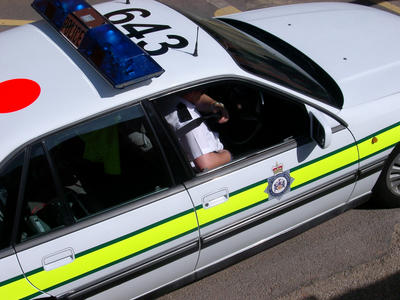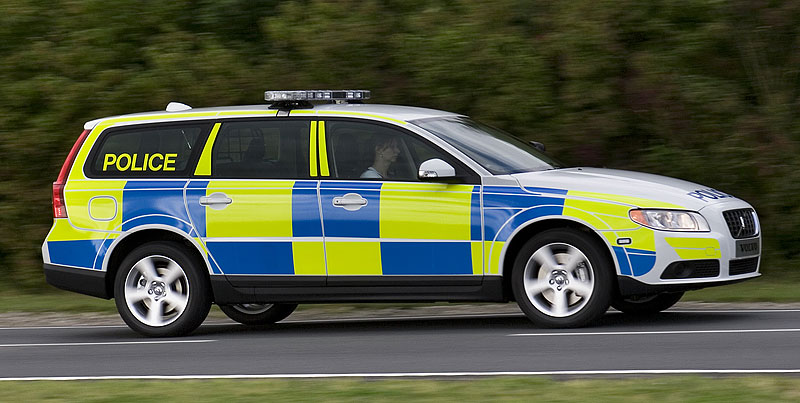The first police car was a wagon run by electricity fielded on the streets of Akron, Ohio in 1899. The first operator of the police patrol wagon was Akron Police officer Louis Mueller, Sr. It could reach 16 mph (26 km/h) and travel 30 mi (48 km) before its battery needed to be recharged. The car was built by city mechanical engineer Frank Loomis. The $2,400 vehicle was equipped with electric lights, gongs and a stretcher. The car's first assignment was to pick up a drunk man at the junction of Main and Exchange streets.
Commonly known names to describe police cars are (police) cruiser, squad car, panda car, area car and patrol car. Depending on the configuration of the emergency lights, and/or striping or legends, a police car may be considered a marked or unmarked unit. In some places a police car may also be informally known as a cop car, a black and white, a cherry top, a gumball machine, or a jam sandwich. In Los Angeles CA, from the early 1950s until the late 1970s, the lights on police cars were different from cars in most other areas. LAPD units had two forward-facing stationary red lights, with amber flashing lights facing rearward, inside of black metal housings mounted to the roof of the car. This configuration gave the Los Angeles police car the nickname tin can.
 UK Mini Police Car
UK Mini Police Car UK Police Car
UK Police Car UK Police Car
UK Police Car UK Police Car Repair
UK Police Car Repair UK Police Car
UK Police Car UK Police Car
UK Police Car UK Police Car
UK Police Car UK Police Car
UK Police Car UK Police Car
UK Police Car

No comments:
Post a Comment